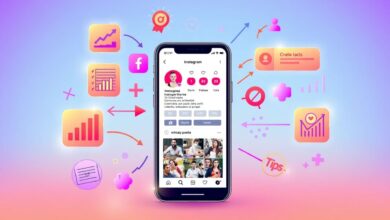LinkedIn is a popular social network for professionals and a valuable source of data for recruiters, job seekers, and marketers. Web scraping LinkedIn for data using Python can be a powerful tool for data collection and analysis – and a full-on side hustle if you’re thinking income-wise.
In this guide, we will cover the basics of LinkedIn scraping using Python, including setting up a LinkedIn account, using the LinkedIn API, and scraping data from LinkedIn pages.
Using the LinkedIn API
One of the easiest ways to scrape data from LinkedIn is to use the LinkedIn API. The LinkedIn API allows you to programmatically access data from LinkedIn profiles, companies, jobs, and more.
To use the LinkedIn API, you need to first create a LinkedIn developer account and register a new LinkedIn application. Once you have registered your application, you will be given an API key and secret that you can use to authenticate your API requests.
Here is an example of using the LinkedIn API to retrieve data about a user’s profile:
import os
from linkedin_api import Linkedin
# Authenticate with the LinkedIn API using your API key and secret
API = Linkedin(
os.getenv(“LINKEDIN_USERNAME”),
os.getenv(“LINKEDIN_PASSWORD”),
refresh_cookies=True,
)
# Retrieve the user’s profile data
profile = API.get_profile()
print(profile)
This code uses the LinkedIn API library to authenticate with the LinkedIn API using your API key and secret and retrieves the user’s profile data.
Scraping Data from LinkedIn Pages
In addition to using the LinkedIn API, you can also scrape data from LinkedIn pages using Python. Here is an example of scraping data from a LinkedIn page using the requests and BeautifulSoup libraries:
import requests
from bs4 import BeautifulSoup
# Define the LinkedIn profile URL to scrape
profile_url = “https://www.linkedin.com/in/johndoe/”
# Send a GET request to the LinkedIn profile page
response = requests.get(profile_url)
# Parse the HTML content of the page using BeautifulSoup
soup = BeautifulSoup(response.content, “html.parser”)
# Extract the profile name, title, and location
name = soup.select_one(“.pv-top-card–list > li:first-child”).get_text(strip=True)
title = soup.select_one(“.pv-top-card–list > li:nth-child(2)”).get_text(strip=True)
location = soup.select_one(“.pv-top-card–list > li:nth-child(3)”).get_text(strip=True)
print(name, title, location)
This code sends a GET request to a LinkedIn profile page and uses the BeautifulSoup library to parse the HTML content of the page and extract the profile name, title, and location.
Best Practices for Scraping LinkedIn
When scraping data from LinkedIn, it is important to be respectful of LinkedIn’s terms of service and follow best practices for web scraping. Here are some tips for properly scraping LinkedIn data:
- Limit your scraping frequency: LinkedIn has rate limits in place to prevent excessive scraping. Make sure that your code does not send too many requests too quickly, and add pauses or retries when necessary.
- Respect LinkedIn users’ privacy: Do not scrape data from LinkedIn profiles without the user’s consent. If you are using scraped LinkedIn data for marketing or recruiting purposes, make sure that you obtain the user’s consent before contacting them.
- Monitor your scraping activities: Keep track of your scraping activities and be prepared to stop or adjust your scraping activities if LinkedIn requests that you do so.
Using GoLogin Browser for LinkedIn Scraping
Social media websites tend to use heavy anti-scraping techniques to prevent automated access. Proxies and VPNs don’t work against them anymore. Now, with browser fingerprinting implemented everywhere, scrapers need to bring advanced privacy tools to the table.
GoLogin, which was originally a privacy browser, is widely used as a scraper protection tool to help eliminate bot detection risks. It manages browser fingerprints and makes every profile look like a normal Chrome user to even the most advanced websites. You can run spiders from under a carefully made anonymous user agent and avoid scraper detection.
In conclusion, scraping data from LinkedIn using Python can be a powerful tool for data collection and analysis. By following best practices for web scraping and using tools like the LinkedIn API and GoLogin, you can ensure that your scraping activities are ethical, respectful, and effective.








